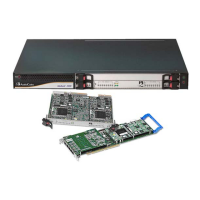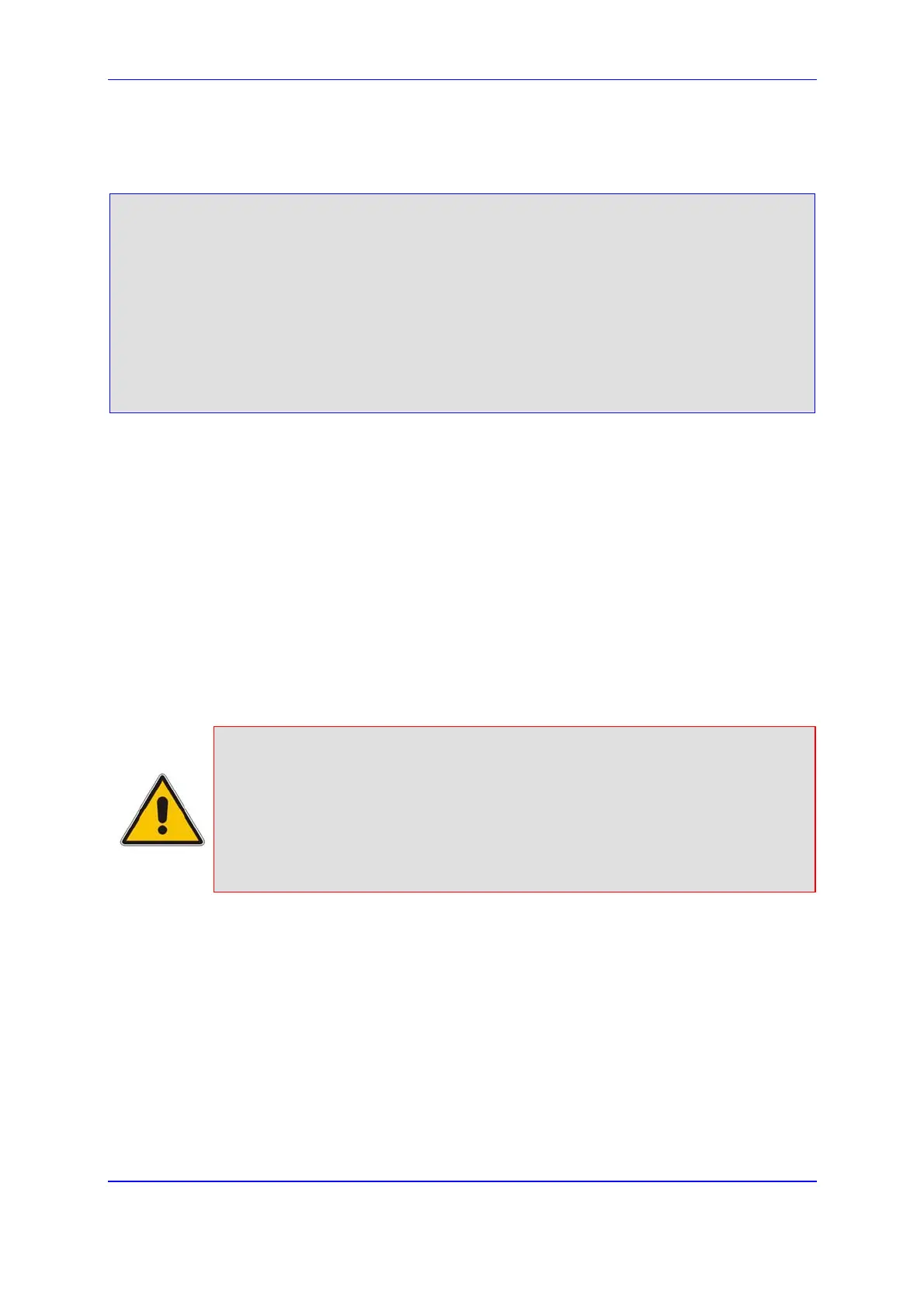Version 5.2 363 September 2007
SIP User's Manual 7. Telephony Capabilities
7. Upon receiving this request and if accepted by the Proxy, the proxy returns a 200 OK
response closing the REGISTER transaction.
SIP/2.0 200 OK
Via: SIP/2.0/UDP 10.1.1.200
From: <sip: 122@10.1.1.200>;tag=1c23940
To: <sip: 122@10.1.1.200>
Call-ID: 654982194@10.1.1.200
Cseq: 1 REGISTER
Date: Thu, 26 Jul 2001 09:34:42 GMT
Server: Columbia-SIP-Server/1.17
Content-Length: 0
Contact: <sip:122@10.1.1.200>; expires="Thu, 26 Jul 2001 10:34:42
GMT"; action=proxy; q=1.00
Contact: <122@10.1.1.200:>; expires="Tue, 19 Jan 2038 03:14:07
GMT"; action=proxy; q=0.00
Expires: Thu, 26 Jul 2001 10:34:42 GMT
7.12 Working with Supplementary Services
The gateway supports the following supplementary services:
Call Hold and Retrieve; refer to 'Call Hold and Retrieve' on page 363
Call Transfer; refer to 'Call Transfer' on page 364
Call Forward (doesn't initiate call forward, only responds to call forward requests)
Call Waiting
The gateway SIP users are only required to enable the Hold and Transfer features. By
default, the Call Forward (supporting 30x redirecting responses) and Call Waiting (receipt
of 182 response) features are enabled.
Notes:
• All call participants must support the specific supplementary service that
is used.
• When working with certain application servers (such as BroadSoft’s
BroadWorks) in client server mode (the application server controls all
supplementary services and keypad features by itself), the gateway's
supplementary services must be disabled.
7.12.1 Call Hold and Retrieve
Hold / Retrieve:
The party that initiates the hold is called the holding party; the other party is called the
held party. The gateway can't initiate Call Hold, but it can respond to hold requests
and as such, it's a help party.
After a successful Hold, the holding party hears a Dial Tone (HELD_TONE, defined in
the gateway's Call Progress Tones file).
After a successful retrieve, the voice is connected again.

